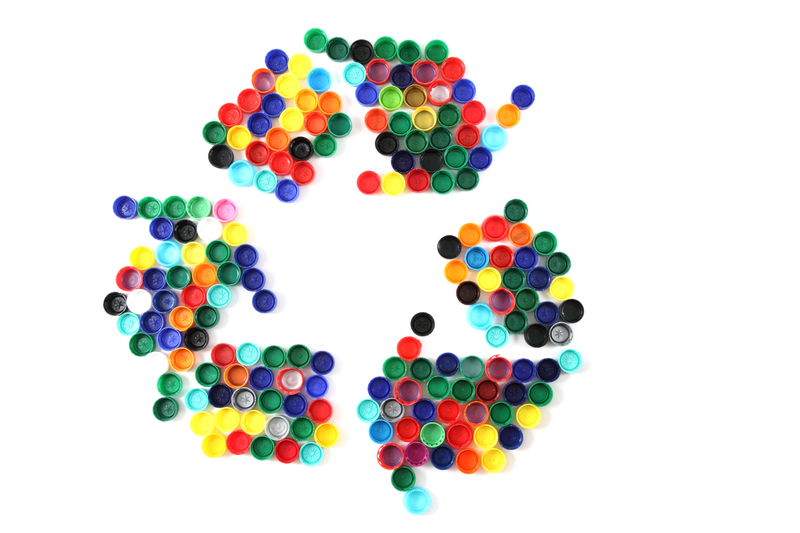The Art of Letting Go: Recycling and Disposing Pots and Pans
In every kitchen, pots and pans are among the most used and loved tools. Over the years, they become seasoned and carry the stories of countless family meals. Eventually, however, every pan reaches the end of its lifespan. Recycling and disposing of old pots and pans is not only about clearing up space; it's about making environmentally responsible decisions and letting go with purpose. In this comprehensive guide, we will explore the art of letting go: how to responsibly dispose of pots and pans, where to recycle them, and ways to upcycle or donate cookware, ensuring your old culinary companions avoid the landfill whenever possible.
Why Properly Disposing of Pots and Pans Matters
Kitchen items like pots and pans are mostly made from metals such as aluminum, stainless steel, copper, or cast iron. Sometimes, they have coatings like non-stick surfaces or enamel. Tossing unwanted cookware in the general trash means these valuable materials end up in a landfill, wasting resources and harming the environment. Proper disposal or recycling closes the loop, preserving natural resources and reducing emissions caused by mining and processing virgin materials.
- Environmental Conservation: Metals can be melted down and reused, reducing the need for new raw materials.
- Preventing Harmful Waste: Non-stick coatings can release toxins if incinerated improperly.
- Supporting a Circular Economy: Recycling encourages manufacturers to use recycled content, minimizing environmental impact.
Letting go of old pans thoughtfully is an act of environmental stewardship.

Assessing Whether Your Pots and Pans Can Be Reused
Before you recycle or throw away cookware, consider if they are ready to let go or if someone else could use them. Here's how to assess their condition:
- Lightly Used: Some scrapes or discoloration doesn't mean a pot is at its end. Many people are looking for affordable cookware, such as college students or those setting up new homes.
- Heavily Damaged or Worn: Peeling non-stick surfaces, warped bottoms, or deep rust can make pans unsafe or unusable, making them better candidates for disposal or recycling.
- Still Functional? If a pot can still perform its intended function without health risks, consider donation or upcycling before disposal.
Donation: Give Your Old Cookware a Second Life
If your cookware has plenty of life left, consider donating pots and pans to a local charity, thrift store, community kitchen, or shelter. Be sure to check with the organization first, as some only accept gently used items.
- Goodwill and other non-profits often accept kitchenware in safe, usable condition.
- Local shelters, food banks, or community centers might need extra cooking equipment.
- Online giving platforms like Freecycle, Facebook Marketplace, or Craigslist are great for passing on items for free or a small fee.
Repurposing and Upcycling: Creative Uses for Old Pots and Pans
Imagine your old cookware not as clutter, but as the raw material for a new project! Here are some innovative ideas for upcycling:
- Garden Planters: Fill an old saucepan or colander with soil and plant herbs, flowers, or succulents for a rustic garden display.
- Storage Bins: Deep pots or Dutch ovens can hold utensils, garden tools, or craft supplies.
- Wall Art or Clocks: Transform cast iron pans into a quirky wall clock or kitchen-themed art.
- Candle Molds: Small pans or muffin tins make excellent molds for homemade candles.
By reimagining your cookware, you can keep it out of the landfill and add unique, functional touches to your home.
How to Recycle Pots and Pans: Step-by-Step
The most eco-friendly way to let go of old cookware is through recycling. The process will depend on what the pot or pan is made of and any coatings it may have.
Step 1: Identify the Material
- Stainless Steel: Can be recycled easily, prized for its value.
- Aluminum: Also highly recyclable. Lightweight pans often fall under this category.
- Copper: Often used as a core in high-end pans; valuable to scrap dealers.
- Cast Iron: Recyclable, though heavy and cumbersome.
- Non-Stick/Coated: Difficult to recycle due to chemical coatings; may require special facility.
Step 2: Remove Non-Metal Parts
Whenever possible, remove non-metal components such as plastic handles or glass lids. These may need to be disposed of separately as they can contaminate metal recycling.
Step 3: Find a Recycling Center
Contact your local recycling center or city sanitation department to see if they accept cookware. Most curbside programs do not accept pots and pans, but these locations can help:
- Metal Recycling Facilities: Many scrap metal yards accept cookware, especially if it is all metal.
- Special Recycling Events: Some regions offer collection days for hard-to-recycle household items.
- Zero-Waste Shops: Seek out businesses dedicated to recycling uncommon household goods.
Tip: If you can identify the pan type (steel, aluminum, copper), you may even get paid a small amount for scrap metal!
Step 4: Drop Off and Dispose Responsibly
Take your sorted and prepared cookware to the recycling facility. Be sure to mention if your pan is coated or non-stick so they can process it correctly.
What About Non-Stick and Teflon-Coated Pans?
Disposing of non-stick cookware properly is crucial due to the chemicals involved, such as PTFE (Teflon) and PFOA, which can be harmful if incinerated or left to decompose.
- Check for Community Programs: Some manufacturers or municipal programs host take-back or recycling days specifically for non-stick cookware.
- Contact the Manufacturer: Certain brands offer mail-back recycling programs for their products.
- Disposal as a Last Resort: If no recycling options exist in your area, wrap the pan securely and dispose of it in the trash. Never burn non-stick pans, as this releases harmful fumes.
Always check local guidelines, as waste management rules vary by region.
How to Properly Dispose of Pots and Pans in the Trash
If recycling is not an option and donation or upcycling are not feasible, you may need to throw away your pots and pans. Here are a few best practices for safe disposal:
- Ensure pans are cool, clean, and dry to prevent creating odor or other sanitary issues.
- If pans are sharp or broken (such as cracked ceramic or glass lids), wrap them in old newspaper or cloth to protect sanitation workers.
- Check with your local waste service about bulky item pickup or special collection times for large amounts of metal.
Remember, throwing away pots and pans should be a last resort when you have exhausted recycling, donation, or upcycling options.
Special Considerations for Unique or Antique Cookware
Before disposing of antique, vintage, or collectible cookware, do a little research. Some old cast iron, copper pans, or designer pieces may have value for collectors or culinary enthusiasts. Try selling on secondhand marketplaces such as:
- eBay
- Etsy
- Local antique dealers or auctions
Restored antique cookware can fetch a good price and find a new home with someone who appreciates its history and craftsmanship.
Tips for Maintaining Pots and Pans (to Reduce Waste)
The best way to minimize waste is to extend the life of the cookware you already own. Here are some maintenance habits that help your pots and pans last longer:
- Hand-wash when possible: Dishwashers can damage non-stick surfaces and warp metals.
- Avoid metal utensils: They can scratch and degrade both non-stick and metal surfaces.
- Season pans regularly: Especially for cast iron, which can last for generations if maintained.
- Store carefully: Stack gently or use pan protectors to prevent dents or chipping.
By caring for your kitchen tools, you can reduce the frequency with which you need to dispose of pots and pans, conserving resources and saving money.
Summary: The Responsible Journey of Letting Go
Learning how to recycle, donate, upcycle, or dispose of old pans is a necessary kitchen skill for sustainable living. Every year, millions of cookware items are thrown away, but with a bit of effort, you can:
- Minimize landfill waste by recycling or repurposing metal and other materials.
- Support your community by donating usable items.
- Get creative with home DIY projects that give pots and pans a second life.
- Reduce environmental impact by making thoughtful disposal choices.
The art of letting go is more than an act of decluttering; it is a mindful practice supporting environmental preservation, community, and creativity.

Frequently Asked Questions About Disposing of Pots and Pans
Can I put old pots and pans in my curbside recycling bin?
Usually not. Most municipal recycling programs do not accept cookware in curbside bins due to size, coatings, or contamination. Take pans to a scrap metal facility or check for special recycling events.
What should I do with non-stick pans that are scratched or peeling?
If you cannot find a recycler that handles PTFE or other non-stick coatings, dispose of them with household trash after safely wrapping them to prevent injury. Avoid burning these types of cookware.
Are there manufacturers who recycle their own cookware?
Yes! Some brands run take-back or mail-in recycling programs. Check the company's website or contact customer service.
Is cast iron recyclable?
Absolutely - cast iron pans are highly recyclable at scrap metal facilities. Alternatively, consider restoring or donating them, as seasoned cast iron has value.
Are there any creative ways to reuse old pots other than planters?
Definitely! Muffin tins can be used to organize small items, lids can make quirky wall decor, and deep pots work as tool caddies or even pet bowls.
Conclusion: Embrace the Art of Letting Go
Letting go of treasured tools can be emotional, but with today's focus on sustainability, it's also an opportunity to do good for the planet. Recycling, donating, or repurposing old pots and pans reduces waste and honors their journey in your kitchen. Encourage friends and family to rethink how they say goodbye to cookware too -- together, we can all become masters of the art of letting go.
```